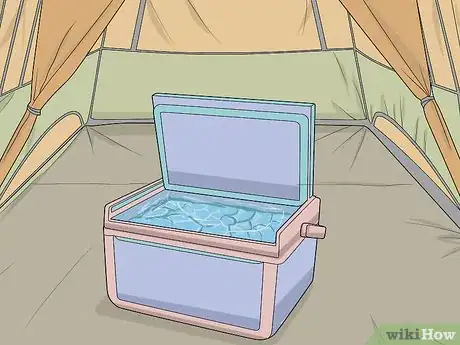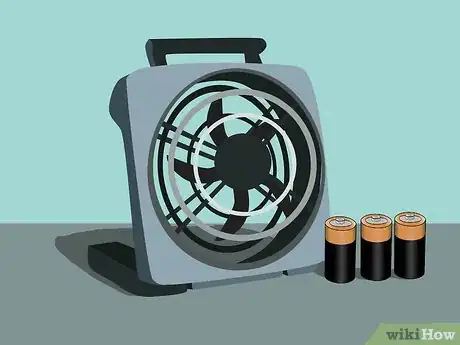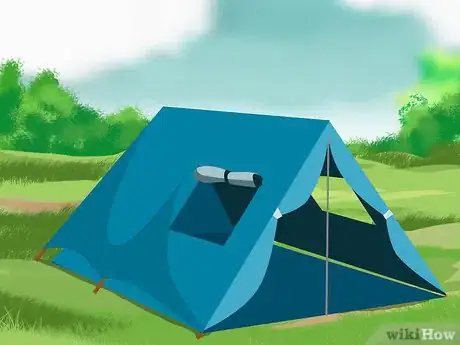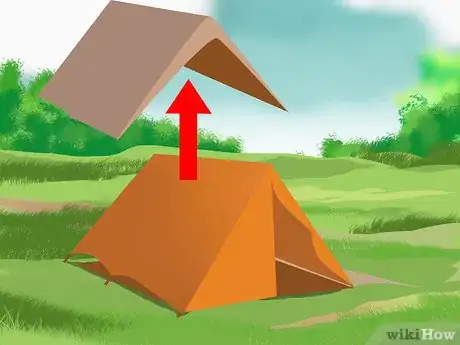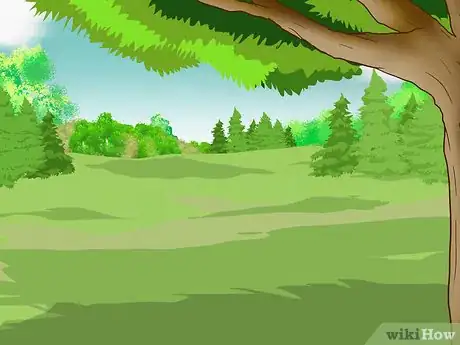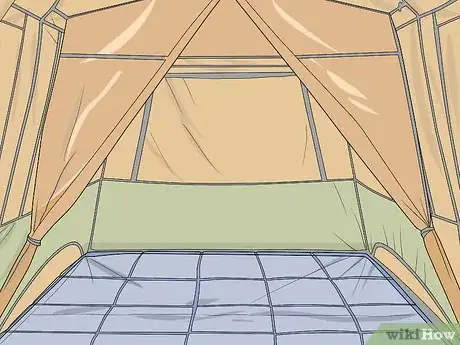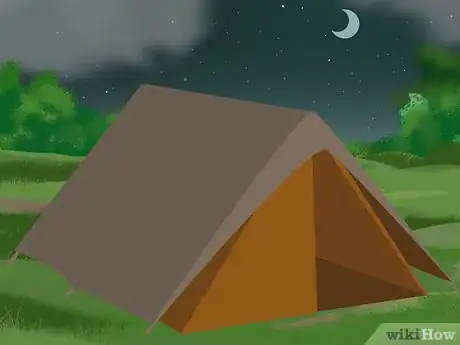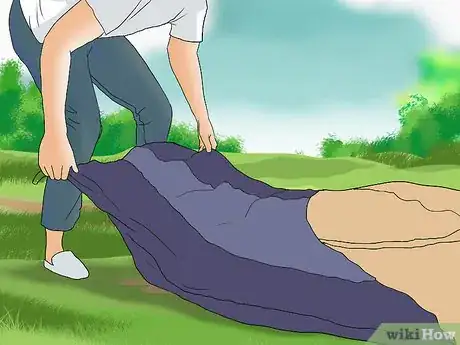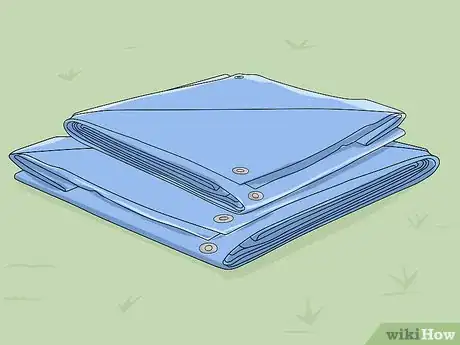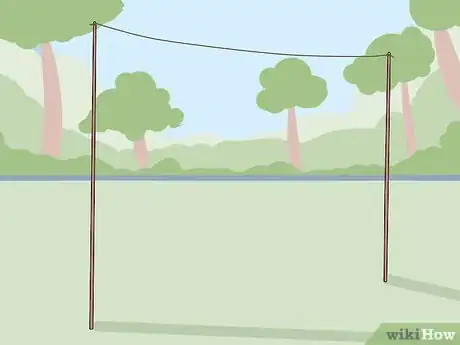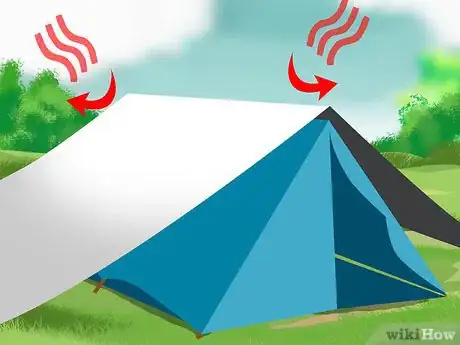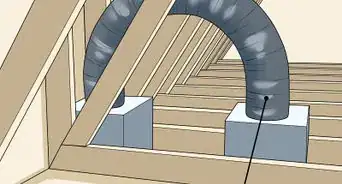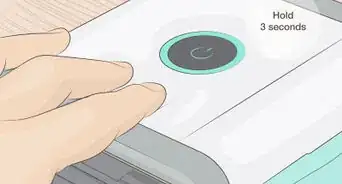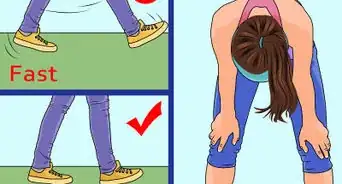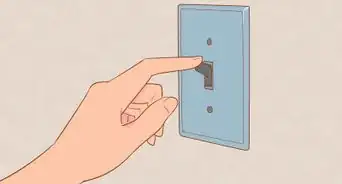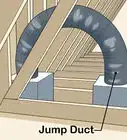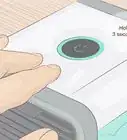This article was co-authored by Halle Payne and by wikiHow staff writer, Danielle Blinka, MA, MPA. Halle Payne has been hiking and backpacking in Northern California for over 3 years. She was Trip Leader for Stanford University’s Outdoor Education Program, Hiking Leader for Stanford Sierra Conference Center, and has taught classes in Outdoor Education and Leave No Trace principles.
This article has been viewed 68,425 times.
Camping is a fun outdoor activity, even on hot summer days. However, your tent can get really uncomfortable if it’s hot. Fortunately, you have options for keeping your tent cool. You can beat the heat by using your supplies to your advantage, pitching your tent in the right spot, and using a tarp or sunshade to block out heat.
Steps
Cooling a Pitched Tent
-
1Bring your cooler of ice into the tent. If you brought your food or drinks in a cooler, the chill from the ice is the best way to lower the temperature of your tent. Place the cooler in the tent and open it. The ice will cool down the air in the tent so you’re more comfortable.
- If you don’t want all of your ice to melt, take a few handfuls of ice out of the cooler and place them in a bowl or container. Then, place it inside your tent.
-
2Use a battery-operated fan to circulate the air. Place your fan in the doorway of the tent or in a back corner. If it has the option, place it on oscillating so it better increases the air circulation. This will help cool down your tent.
- Even a small personal fan can make a big difference! However, try to bring a larger portable fan if you can find one.
Tip: If you have a cooler, place the fan behind the cooler so that the fan will blow the cool air out into the tent. Alternatively, fill a cup or bowl with ice from your cooler and place it in front of the fan.
Advertisement -
3Open your tent’s door and vents if it has any. This allows more air to circulate inside your tent. If your tent has mesh to protect you from bugs and animals, leave your doors and vents open all of the time. Otherwise, leave the door and vents open when you’re not in the tent and during the day.[1]
- If you’re shopping for a tent, look for 1 that has a mesh layer so that you can leave the doors and vents open longer. Additionally, pick a tent that has vents because it’ll be cooler.
-
4Remove the rain fly if the weather forecast doesn’t predict rain. Most tents come with a rain fly to keep moisture from entering the main chamber. Because these are often quite thick, they can trap in heat and raise the temperature of the tent. If there’s no rain in the forecast, remove the rain fly and store it in the tent bag. This can help keep the tent cool.[2]
- If you have a tarp or sunshade over your tent, you may not need your rain fly even if it is raining. The tarp or sunshade should keep the rain out of your tent.
-
5Sleep on top of your sleeping bag to stay cool. Since sleeping bags are designed to retain heat, don’t get inside it if it’s warm in the tent. Instead, lay on top of the tent so you’re comfortable and cool.[3]
- If more than 1 person is sleeping inside your tent, body heat will increase the temperature of the tent. Keep that in mind if you’re worried about getting cold.
Tip: When you’re camping during hot weather, it’s best to bring a sheet that you can sleep under. You’ll stay much cooler than you would inside your sleeping bag.
Setting up Your Tent
-
1Put your tent in a shady spot, like under a tree. If possible, choose a spot where trees will cover your tent. This way, the trees will absorb most of the heat so your tent stays cool. Otherwise, look for an area that’s in the shadow of a larger structure, like a mountain.[4]
- Shady locations are typically found under a tree, near low hills, under ridges, or close to any nearby cabins.
- Remember that the sun's position moves, so look for areas that will keep your tent cool while you are in it. For instance, an eastern ridge will likely block the sun better in the morning than a western ridge would.
-
2Find an area with good wind circulation. Blowing wind will keep the temperature lower, so choose a home base that has good circulation. Additionally, position the door of your tent so that it’s facing the wind.[5]
- To figure out which way the air is blowing, hold your hand up into the air. The cold side of your hand will tell you which direction the wind is blowing from. As another option, check a weather app if you have cellular reception.
-
3Camp by a river or lake where it’s cooler. It’s typically cooler near bodies of water, so they’re a great place to camp during hot weather. If you’re near a lake, pond, or ocean, point your tent toward the coast to catch any breezes rolling off the water. For rivers and creeks, point your tent upstream to catch cool winds.[6]
-
4Place a blanket under your tent to block ground heat. The ground naturally heats up as it absorbs the sun’s rays. This heat can radiate up into your tent, raising the temperature. Covering the ground with a blanket can keep the heat trapped below your tent. Pitch your tent on top of the blanket.
Variation: You can use any type of ground cover available to you. This might include a tent footprint if you have one or cardboard if you brought some. As another option, layer leaves under your tent to keep the heat out.
-
5Set up your tent after dark to avoid the daytime heat. Unless you plan on using it throughout the day, build your tent after the sun starts setting. Until then, keep it in its bag and store it in a cool or shaded area. For particularly hot days, keep your tent bag on ice.[7]
- If the sun is up, heat will be building up inside your tent.
- If you’re worried it’ll be hard to set up your tent in the dark, do it while the sun is setting so there’s still light.
-
6Take down the tent during the day if it’s very hot. While it’s inconvenient to have to put your tent back up every day, this can prevent your tent from feeling like an oven. Tents are designed to hold heat, so your tent will get hotter and hotter if you leave it up. For best results, take your tent down in the morning and put it back up in the evening.[8]
- Store the tent in a cool area so that it stays as cool as possible.
Using a Tarp or Reflective Shade
-
1Get a tarp or sunshade that covers your entire tent. While a sunshade works best, a tarp or blanket can also keep the heat off of your tent. Pick up a sunshade or tarp before you go camping, or use what you have to block out the sun.
- The sun is typically what makes your tent heat up, so blocking its rays will be a big help.
-
2Push stakes or poles into the ground to support the tarp or sunshade. Most sunshades come with the poles you need to set it up. If you're using a tarp or blanket, you can use loose stakes or poles. Put them in the ground deep enough to keep them steady. Then, tie the poles together to create a base to hold up your sunshade or tarp.[9]
- It’s best to drape the tarp or sunshade over a tree branch for added support.
- You can find stakes and poles at your local camping or outdoor store.
Variation: If you’re improvising, use tree branches, the top of your vehicle, or the supplies you brought with you to help hold up your shade.
-
3Drape your tarp or sunshade at least 12 in (30 cm) above the tent. Gently place the sunshade or tarp over the pole or stakes. Adjust it so that it covers the entire tent. Leave space between the tarp or sunshade and the top of your tent so that air can circulate.[10]
- The sun’s rays will bounce off the sunshade or tarp, which will prevent them from soaking into your tent.
Expert Q&A
-
QuestionHow far should you camp from water?
 Halle PayneHalle Payne has been hiking and backpacking in Northern California for over 3 years. She was Trip Leader for Stanford University’s Outdoor Education Program, Hiking Leader for Stanford Sierra Conference Center, and has taught classes in Outdoor Education and Leave No Trace principles.
Halle PayneHalle Payne has been hiking and backpacking in Northern California for over 3 years. She was Trip Leader for Stanford University’s Outdoor Education Program, Hiking Leader for Stanford Sierra Conference Center, and has taught classes in Outdoor Education and Leave No Trace principles.
Hiking & Backpacking Trip Leader To follow Leave No Trace principles — and avoid impacting water sources — make sure your camp isn't closer than 200 yards to water.
To follow Leave No Trace principles — and avoid impacting water sources — make sure your camp isn't closer than 200 yards to water.
Warnings
- If your tent causes you to sweat significantly and feel faint, nauseous, confused, or weak while inside, exit immediately, find a cool, shady place to recover, and drink lots of water.[12]⧼thumbs_response⧽
References
- ↑ https://coolofthewild.com/how-to-stay-cool-while-camping/
- ↑ https://coolofthewild.com/how-to-stay-cool-while-camping/
- ↑ https://coolofthewild.com/how-to-stay-cool-while-camping/
- ↑ https://coolofthewild.com/how-to-stay-cool-while-camping/
- ↑ https://koa.com/blog/tips-for-staying-cool-on-summer-camping-trips/
- ↑ https://coolofthewild.com/how-to-stay-cool-while-camping/
- ↑ https://koa.com/blog/tips-for-staying-cool-on-summer-camping-trips/
- ↑ https://koa.com/blog/tips-for-staying-cool-on-summer-camping-trips/
- ↑ https://koa.com/blog/tips-for-staying-cool-on-summer-camping-trips/
About This Article
To keep your tent cool, place a blanket or layer leaves underneath the bottom of it while you’re setting it up, which will help block heat radiating up from the ground. If possible, install the tent in the shade of a tree. Once the tent’s set up, open its door and any vents to let air circulate. If it doesn’t look like it will rain, you can also remove the outer layer, which can trap heat inside the tent. Alternatively, drape a tarp over the top to shade your tent from the sun. If you have an ice cooler with you, bring it inside the tent and open it to cool the air. For more tips from our Hiking and Backpacking co-author, including how to choose a camping site with good air circulation, read on!
